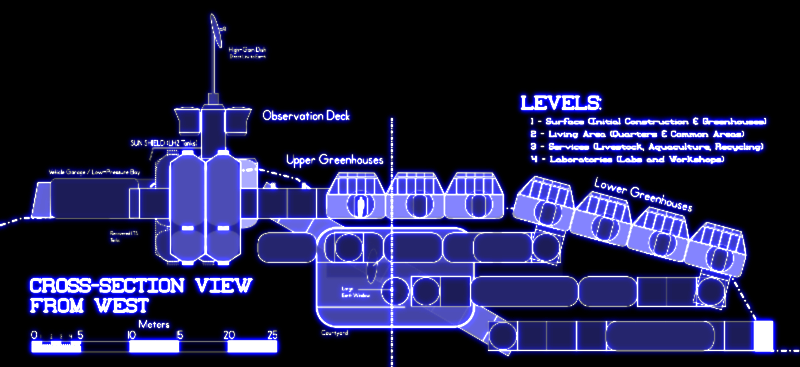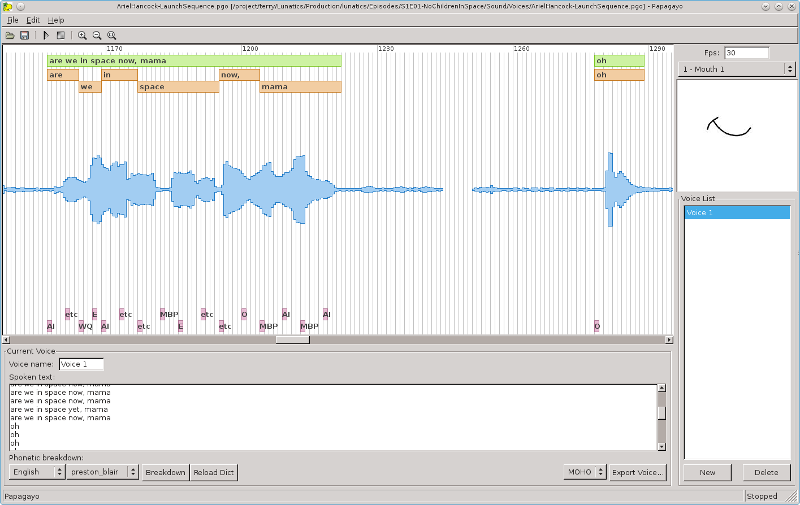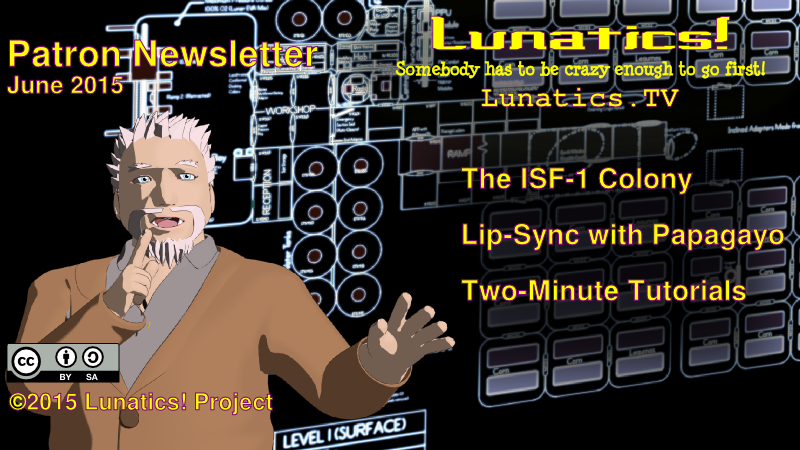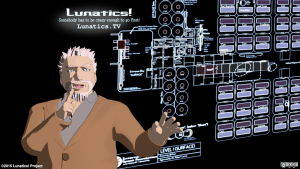The ISF-1 Colony
Just this week, I gave Travis Souza the first materials for modeling the sets for the ISF-1 Colony, which will debut on screen in Part 3 of our pilot, “No Children in Space”. This is the big one, as far as the series is concerned, because most scenes will be set there.
A Plausible Moon Colony
Science fiction (and engineering studies) have produced a lot of images of extra-terrestrial colonies, but most of them are lacking in terms of believability. Having spent quite a bit of time studying the problems of creating a colony (and of colonies on Earth), there are a number of problems with “movie space colonies” that we’re trying to address — and our solutions:
- Radiation Shielding
- It’s fun to have lots of gadgets to look at on the surface, but real colonies will probably need to be buried under many tons of regolith in order to provide sufficient protection from the radiation environment, which is much harsher on the Moon (or Mars), being directly exposed to the solar wind, outside of the protection of the Earth’s magnetosphere.
Our colony is mostly buried on a crater rim, with only the areas that need surface access on the surface — and even here, we have about a meter of soil on top of most of it. There’s an observation deck with a radio tower, and surface greenhouses. But work areas are under a meter or so of soil, and the living areas are deeper still.
- Interior Volume
- We have a tendency to underestimate the amount of ecosystem that is needed to support each of us, because on Earth, a lot of it is hidden from us in the outside environment, away from our habitats — sewage treatment systems, waste management system, wetlands, oceans, forests, farms, ranches, water purification system, food systems (preservation, storage, and preparation), energy collection and buffering, heating, lighting, and so on. Most of that goes on on an agricultural and industrial scale, well out of our sight. It’s nice to pretend you can do these things all on your own, but actually doing so is an enormous undertaking, and without economies of scale, there are limits to how small you can make all of this.
- Number of People
- While some science-fiction shows us implausibly-poorly-equipped outposts, others err in the other direction, showing whole towns or cities in space. Starting on that level of organization is pretty implausible from a social perspective. There’s just not enough financial motivation to develop a whole city out of nowhere. So the first colonies will be as small as we can get away with.
We chose to set up our colony as primarily a collaboration between two families with complementary skills and a common interest in space development — this made it just possible to plausibly cover all the necessary skills, without making things so large that it could never get done.
- Not Enough Crops!
- A colony is first and foremost a FARM. Farming is a chancy, unpredictable business. Reliably producing enough to eat, means planting enough so that the inevitable crop failures will not mean a death sentence for the colonists. This means that, in any real space colony, a majority of the interior volume will be dedicated to food production and other support services.
About three-quarters of the interior volume of our colony is dedicated to agricultural and industrial infrastructure, with not only the greenhouses on the surface (Level 1), but also the farm and livestock areas on Level 3.
- Cabin Fever!
- Humans need some space to move around in. We usually get out into the open, and this compensates for how much time we spend indoors, but in a space colony, people will be “indoors” all the time, even when engages in “outdoor” activity. Meanwhile, the TRUE outdoors, outside the colony is a desert in a vacuum — going there is more like going on a scuba dive than like a walk in the park.
Space advocate and editor of the “Moon Miner’s Manifesto”, Peter Koch, coined the expression “middoors” to talk about interior colony spaces that are meant to feel more like outdoors to the colonists. The effect will likely be similar to the large indoor spaces architect build for shopping malls — designed to create the illusion of nature and larger spaces, but which still have a certain artificial quality.
The main middoors feature of our colony is the “courtyard” module, which we built to be as large as we considered plausible with existing/near-future technology and limited budgets.
- Solipsism
- Even with such “middoors” spaces, though, the artificiality of colonies will contribute to a sense of disconnectedness. For Moon colonies, where it’s necessary to build mostly underground, this will be especially true, because of the relative lack of windows. There’s just not much to give you a sense of being connected to nature, or to the outside world.
In our story, we combat this through architectural features like the “Earth Window” in the courtyard, which provides a nearly-fixed view of the Earth, since the Moon is tidally-locked, the observation deck that allows the colonists to look out in all directions if they want, and of the surface greenhouses, which, when dark allow for the colonists to see the stars at night. We also emphasize the importance of electronic media and the internet as means of connecting with the rest of the human race.
- Construction Sequence
- Of course, the colony would have to actually be built, and in designing our colony, we put some thought into what would get built first, and the process of construction:
- First, the Level 1 Avalon modules were put on the surface, serving as a “construction shack” to house the crew during construction
- Control and power systems were added, including the first solar arrays, used to power construction operations (these take advantage of the tilt of the crater rim to get improved sun exposure at the colony’s 45-degree northern latitude
- Then the crater rim was excavated down to the bottom level of the colony, directly behind the construction habitat
- Then the successive on-site casted modules were laid down, building up from Level 4 to Level 1, with the waste regolith from the excavation being used to cover each layer
- This built back up to the surface level, with the greenhouses, and the construction modules were also covered

Plans for the Colony
If you’re interested in greater detail, remember the floorplans and a section through the colony are available as part of our “Artbook and Writer’s Guide”, which is available as one single PDF or as several PDF sections on our Resource Space site:
[TK: replace with Nextcloud shares]
Lip-Sync with Papagayo
After much confusion and several failed attempts to install different builds of this software, I finally was successful with
Morevna Project’s Debian package of Papagayo.
For anyone wishing to try it out, I strongly recommend using this version rather than either of the versions from Lost Marble. It has a number of advantages:
- Available in .DEB and .RPM package formats
- Pure Python package, which is more portable (depends on WX Windows 2.x, though — having WX Windows 3.0 installed currently causes it to crash).
- Additional character mouths
- Modular architecture that allows for replacing language modules and phoneme sets easily
What it Does
Papagayo is a single-purpose application: it automates the process of assigning mouth shapes to voice recordings. You load an audio file, then you type in the text of the speech and hit the “breakdown” button. This is broken down into “phonemes” (particular sounds or mouth shapes — the basic level of pronounced language) and maps them onto the timeline above the audio. You can then tweak the text to match.
You can then check the sync by playing the file, and the mouth graphic will animate the speech, so you can see how well it matches.
There are several useful settings:
- The frame rate for the animation.
- Which language is assumed for the text you type (determines how it gets broken down into phonemes)
- The phoneme set that is used for animation (there are a couple of common ones available, and creating a new one requires only very rudimentary Python scripting knowledge)
- The graphical faces or mouths used for the animation preview
The interface is a bit clunky, compared with modern audio applications — it’s missing some navigation features I’m used to in other applications like Audacity or Kdenlive. But since the purpose is to work with short audio voice clips, this probably won’t be a problem. The biggest obstacle right now is that it apparently only works with WAV audio files, which is annoying, since we store all our clips in FLAC format, so that adds a few steps to the workflow. But it’s not a showstopper. And it seems likely that we’ll eventually be able to fix the software to work with a wider range of audio files.
I tried it out with some of Georgiana’s lines from the launch sequence, and it seems like it’s going to work fine — although it does make it clear that syncing the entire episode will be a large task!

2-Minute Tutorials
We’ve just started producing a new series of tutorials, with a simple gimmick to make them a lot more palatable — they are all exactly 2 minutes long. We cover topics very fast, allowing you to quickly learn how we do something, without having to invest a lot of time in it (or falling asleep halfway through!). These are fast-paced, and you may find you have to freeze the video or repeat sections, but the beauty of interactive video is that you can do that, so there’s no reason to put you to sleep going slow.
Each covers a really simple topic — just shows how to do one thing. Here’s an example (and there are more in the same album on Vimeo:
Other News
With our three Summer interns, Keneisha Perry, Travis Souza, and Johnathon Wilson we’ve been making amazingly rapid progress on set modeling this month. Terry Hancock and Monty King are working on developing workflow and strategy for sound design and foley sound development. Rosalyn Hunter and Terry Hancock have also been working on the plans for the rest of “Season 1” episode plots.
We’ve had to bid farewell to Elsa Balderrama, due to her other commitments. I’m disappointed that she won’t be helping us with animation and illustration work, but I’m very thankful for the help she gave us on migrating our website to WordPress.
This does mean that our character animation team is back to just Keneisha Perry and Terry Hancock, and both have a lot of other work to finish, so this may mean more delays on getting Part 1 released. But it’s coming!
This has been an amazingly productive month for modeling! Travis Souza has completed modeling several important sets for Part 1:
- TrainStation-Int: the inside of the renovated station platform in Baikonur
- MissionControl-Int: the control center in Moscow, to which we cut during the launch
- CosmonautHotel-Int: part of the hotel where cosmonauts usually stay in Baikonur
- CosmonautTrees-Ext: park area where cosmonauts traditionally plant a tree for each flight
And Johnnie Wilson has even begun on some sets for Part 2:
- Newsroom-Int
- TalkShow-Int
- InterviewShow-int
- StreetCorner-Ext (London)
This mainly leaves materials and texturing for those sets.
And of course, Travis Souza has also just started on sets for Part 3, with his work on modules for the ISF-1 Colony, just started this week.
Terry Hancock is providing voice-over for the new Synfig Studio 2D animation training package, which also means learning to use it better. There are a number of ways to use this, including title graphics and motion-graphics for monitors and control panels. It will probably be simple to improve a number of the graphics we created for the launch sequence, and to replace some that were done with Inkscape.
We’re preparing to move audio mixing workflow from Audacity to Ardour, which is going to take some time, but a basic installation check has worked for both Terry Hancock and Monty King. We’re now discussing strategies for creating ambient environments to fit the sets.
There’s so much going on that it’s hard to keep up with it all, but it’s very exciting!


